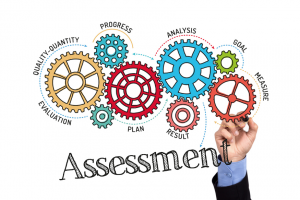
It’s been a difficult year for most hiring managers. Ghosting has become the norm and qualified job candidates overlook employers due to a myriad of reasons. One of the critical reasons is how employers select and use ‘job fit’ assessments during the hiring process. Right now, with so much competition, it’s more important than ever to improve your hiring results.
Q4 is fast approaching. Let’s get real and learn how to use “job fit” assessments to improve your hiring results.
First … What is Job Fit?
The most effective job fit assessment measures learning style, core behavioral traits, and occupational interests. The right assessment goes beyond the resume, application, interview, reference checks, education, work experience, and background checks.
It can also create a diverse workforce that has the key skills required to improve your hiring and business results.
It answers three important questions:
- Can the person do the job?
- Will the person do the job?
- Can the person do the job successfully here?
7 Tips to Use Job Fit Assessments to Improve Results
Think Outside the Box. It’s critical to know what you’re looking for. The problem is too many are dusting off job postings and reposting! Not updating your job posting it’s crazy with all the changes that have occurred due to the pandemic. Get real: Take the time to brainstorm the results you’d like to achieve with the position. Then, add a job title and positive opportunities to entice them! Now, you’re ready to use a job fit assessment!
Select the Right Qualified Job Fit Assessment. Every assessment sales rep will tell you their assessment is the right one!* Of the 3,000+ publishers in the market today, most do not meet pre-employment requirements. Get real: Review their technical manual and compare it with the Department of Labor guidelines for pre-employment tests. Pay close attention to the number of people in the study, and the predictive validity and reliability of the results. The higher the numbers the better the hiring results.
*NOTE: While many test vendors market their tests as validated, just because the vendor says the test was validated, [this] does not mean that the test’s validation will in fact comply with the Uniform Guidelines.” (Source) Alissa Horvitz, Attorney, Roffman mentioned in June, 2016 SHRM article)
Create a Job Fit Pattern. Every qualified job fit assessment has a job fit pattern to help you determine the best fit for the job. Get real. To set up a job fit pattern, conduct a study of current talent that you’d like to hire more of OR create a new job fit pattern using a job analysis survey. This process saves time, money, and a lot of energy pre- and post-hire. If you’ve ever hired a sales rep that said all the right things, but couldn’t sell your products and services, you know the value of a good job fit pattern.
Couple Job Fit Assessment with an Honesty/Integrity Assessment. Using an honesty/integrity assessment along with a job fit assessment makes good business sense. Get real: Job fit tools have a “distortion indicator,” but do not assess for good work ethic and integrity. Qualified honesty/integrity assessments go beyond public records when conducting background checks and can reduce WC, UEC, and turnover costs.
Assess for Skills. The purpose of a skill assessment is to avoid surprises when the applicant states they have the skills required. Use these tools after assessing for job fit. Get real: Use skill assessments to determine the skill level the applicant currently has. When the person is hired, plan to provide online workshops, mentors, and coaches to improve these skill levels where needed.
Don’t Shortcut the Procedure! This happens way too often when someone says all the right things and your ‘spidey-sense’ says, “This is the one.” Then, the candidate is rushed through bypassing your company’s procedures. The problem? The candidate is rarely the right one! Get real. Train all hiring managers to follow the system and read the job fit assessment reports. Ask ALL the interview questions in the selection report for the job fit assessment. It will improve the interview and hiring results.
Don’t Overlook Challenge Areas! Many hiring managers have been embarrassed after hiring the candidate only to find the job fit assessment report indicated challenge areas. Examples include prospecting, closing, working well with a team, etc. Get real. Read the full report. Yes, read the full report! If you don’t, you will miss critical information. Remember, you cannot fix and change a person, no matter what they tell you in the interview!
Qualified job fit assessments provide in-depth insight into the whole person and their fit with the job. Choosing the most effective job fit assessment will make your job as the hiring manager much easier to attract qualified diverse talent and improve hiring results.
©Jeannette Seibly, 2021 All Rights Reserved
 Jeannette Seibly is The Leadership Results Coach. She has been an award-winning executive coach, management consultant, and keynote speaker for over 28 years. Her focus is getting leaders and their teams unstuck and able to achieve dynamic results. Contact Jeannette for a confidential conversation.
Jeannette Seibly is The Leadership Results Coach. She has been an award-winning executive coach, management consultant, and keynote speaker for over 28 years. Her focus is getting leaders and their teams unstuck and able to achieve dynamic results. Contact Jeannette for a confidential conversation.
A note from Jeannette about improving hiring success using job fit assessments. Why should you care about job fit? Qualified job fit assessments provide in-depth insight into the whole person and their fit with the job. Choosing the most effective job fit assessment will make your job as the hiring manager much easier to attract qualified diverse talent and improve hiring results. Contact me for a confidential conversation on how to streamline the process for success.
